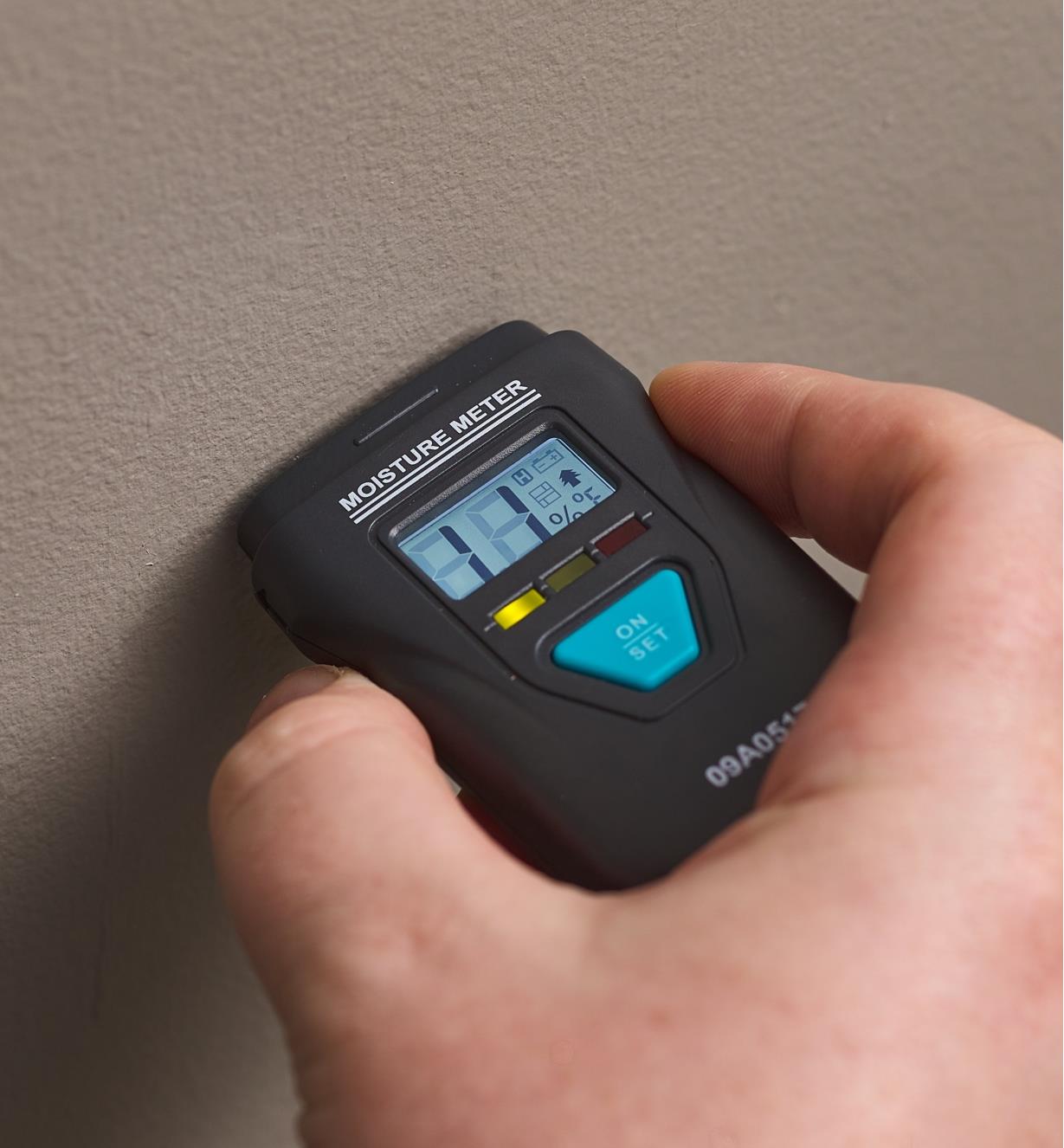Moisture Meter Acquiring Guide: What to Try to find in High-Quality Instruments
Moisture Meter Acquiring Guide: What to Try to find in High-Quality Instruments
Blog Article
The Ultimate Overview to Moisture Meters: A Comprehensive Introduction and Just How They Can Conserve You Cash
In the world of building maintenance, building and construction, and different sectors, the value of properly determining wetness levels can not be overemphasized. Wetness meters offer as crucial devices in spotting and checking moisture material in materials, aiding in protecting against expensive problems and guaranteeing the quality of products. Comprehending the nuances of various kinds of dampness meters, their applications, and the potential cost-saving benefits they provide can be a game-changer for companies and experts alike. Discovering just how these gadgets can not only streamline processes yet likewise add to financial savings is a journey worth beginning on.
Types of Moisture Meters
One typical kind is the pin-type wetness meter, which measures the electric resistance between 2 pins put right into a product. Pinless wetness meters, on the various other hand, usage electromagnetic sensing unit plates to scan a larger location without triggering damage to the material's surface.
Infrared dampness meters gauge the thermal homes of a material to determine its wetness content non-invasively, making them useful for applications where pin or pinless meters might not be ideal. Recognizing the various kinds of wetness meters readily available can assist industries pick the most ideal tool for their certain wetness dimension needs.

Advantages of Making Use Of Moisture Meters

Additionally, utilizing wetness meters can lead to increased power efficiency. In agricultural settings, dampness meters play an important role in enhancing plant returns by allowing farmers to keep track of soil dampness degrees and make notified irrigation decisions.
How to Choose the Right Moisture Meter
Picking the appropriate moisture meter involves taking into consideration crucial elements such as product compatibility, measurement variety, and calibration precision. When choosing a moisture meter, it's important to guarantee that the meter appropriates for the details material you will certainly be screening. Different products have differing electrical residential properties that can affect dampness readings, so choosing a meter developed for your product is vital for precise results. Furthermore, consider the measurement series of the moisture meter. Make sure that the meter can detect moisture degrees within the array required for your applications. Calibration accuracy is an additional essential element to bear in mind (Moisture Meter). Opt for a dampness meter with trusted calibration to guarantee regular and precise analyses. Some meters might require regular calibration adjustments, so understanding the calibration procedure is important. By carefully examining these aspects, you can select a dampness meter that satisfies your needs and gives precise wetness measurements for your jobs.
Appropriate Techniques for Moisture Meter Use
To make certain precise moisture analyses and optimize the efficiency of a dampness meter, using appropriate methods is vital. When using a pin-type wetness meter, put the pins or probes into the material being checked up until they make complete contact. Make certain the pins are vertical to the surface to get the most precise analysis. For pinless dampness meters, hold the device level versus the product and relocate gradually to cover the whole area for an average reading. It's vital to adjust the moisture meter according to the material being tested to boost precision. Take numerous readings across the surface and Bonuses average them out for a more reliable outcome. Furthermore, make certain that the product being checked is adapted to the setting to stop manipulated readings. Routine maintenance of the dampness meter, such as cleansing the pins or sensing unit, is additionally essential to make certain regular and accurate readings. By following these proper techniques, individuals can count on their dampness meter to give trustworthy moisture levels, assisting in preventing costly damage or making sure quality in numerous applications.

Cost Cost Savings With Moisture Meter Applications
Just how can the strategic use of moisture meters cause substantial expense financial savings across different sectors? Moisture meters play a critical role in expense financial savings by avoiding possible damages and guaranteeing high quality control in various industries. In the agriculture sector, dampness meters aid in identifying the optimum time for collecting crops, avoiding excess or over-drying dampness that can impact the final product's high quality. This specific monitoring helps farmers prevent unneeded losses and optimize their return.

In addition, in the food handling sector, dampness meters are crucial for checking item top quality and making sure conformity with security policies. By accurately measuring dampness web content in foodstuff, makers can stop putridity, maintain freshness, and lower waste, causing considerable cost savings. On the whole, the critical application of wetness meters is an important investment that can bring about considerable expense reductions and boosted effectiveness across numerous markets.
Conclusion
In verdict, moisture meters are useful tools for detecting and determining moisture levels in different products. By making use of the right wetness meter and adhering to correct techniques, individuals can successfully protect against costly damages triggered by excess dampness.
Dampness meters offer as essential tools in finding and monitoring moisture content in materials, helping in stopping expensive problems and making certain the top quality of items. Infrared dampness meters measure the thermal homes of a product to identify Full Article its wetness material non-invasively, making them valuable for applications where pin or pinless meters might not be ideal.Dampness meters supply invaluable benefits in properly assessing and monitoring dampness degrees in varied materials and atmospheres. In agricultural settings, dampness meters play a critical duty in maximizing crop yields by enabling farmers to check dirt wetness levels and make informed watering choices.In final thought, moisture meters are beneficial devices for finding and determining dampness levels in various products.
Report this page